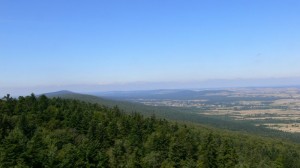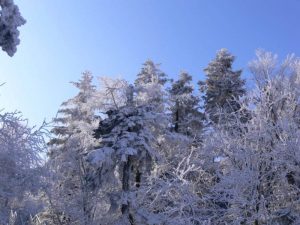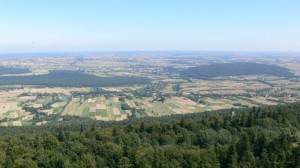VEGETATION OF THE ŚWIĘTOKRZYSKI NATIONAL PARK

The Świętokrzyski National Park protects the most valuable remains of virgin forests which used to cover nearly the entire Kielce Upland in primeval times.
The Park vegetation is mostly autogenous: it had been formed by nature itself, without human interference. Yet, for ages, it had been subject to many influences and interactions, caused by ancient ore mining, iron metallurgy, settlement, agriculture, glass sculpture, wood exploitation, and traditional forestry. Since the beginning of the nineteenth century, the forests of the current Park had been included in planned forest economy. All these factors led to numerous, and sometimes very rapid, disturbances of ecosystems.

As much as 97 % of the ŚNP is forested. The Park’s flora is dominated by forest species as well as species of waterlogged and marshy environments. There are montane, upland, and lowland forests in the ŚNP.
In higher-lying places there grow forests which are similar in composition to the lower subalpine forests of the Beskids. Boulder fields, called gołoborza, found in the Łysogóry range, constitute a kind of analogy to montane saxicolous habitats of lichens and mosses.
Noteworthy is a great number of montane plant species. In the Park and its vicinity, there have been found 45 species so far, with 39 species occurring currently (which makes 5% of the Park’s indigenous flora). These are, among others: Manchurian monkshood, Wood Speedwell, Hard Shield Fern, Ramsons (bear’s garlic), nine-leaved toothwort, Perennial Honesty, Whorled Solomon’s-seal, and also Austrian Leopard’s Bane, the only subalpine species.

The Świętokrzyski National Park is not abundant in flora. Poor quartz substratum leads to subsoil and water acidification. The dominating fir grows densely, shading the forest floor. These factors hinder the vegetation development. Nevertheless, there have been preserved many valuable flora species and plant communities, typical of such ecological conditions.

